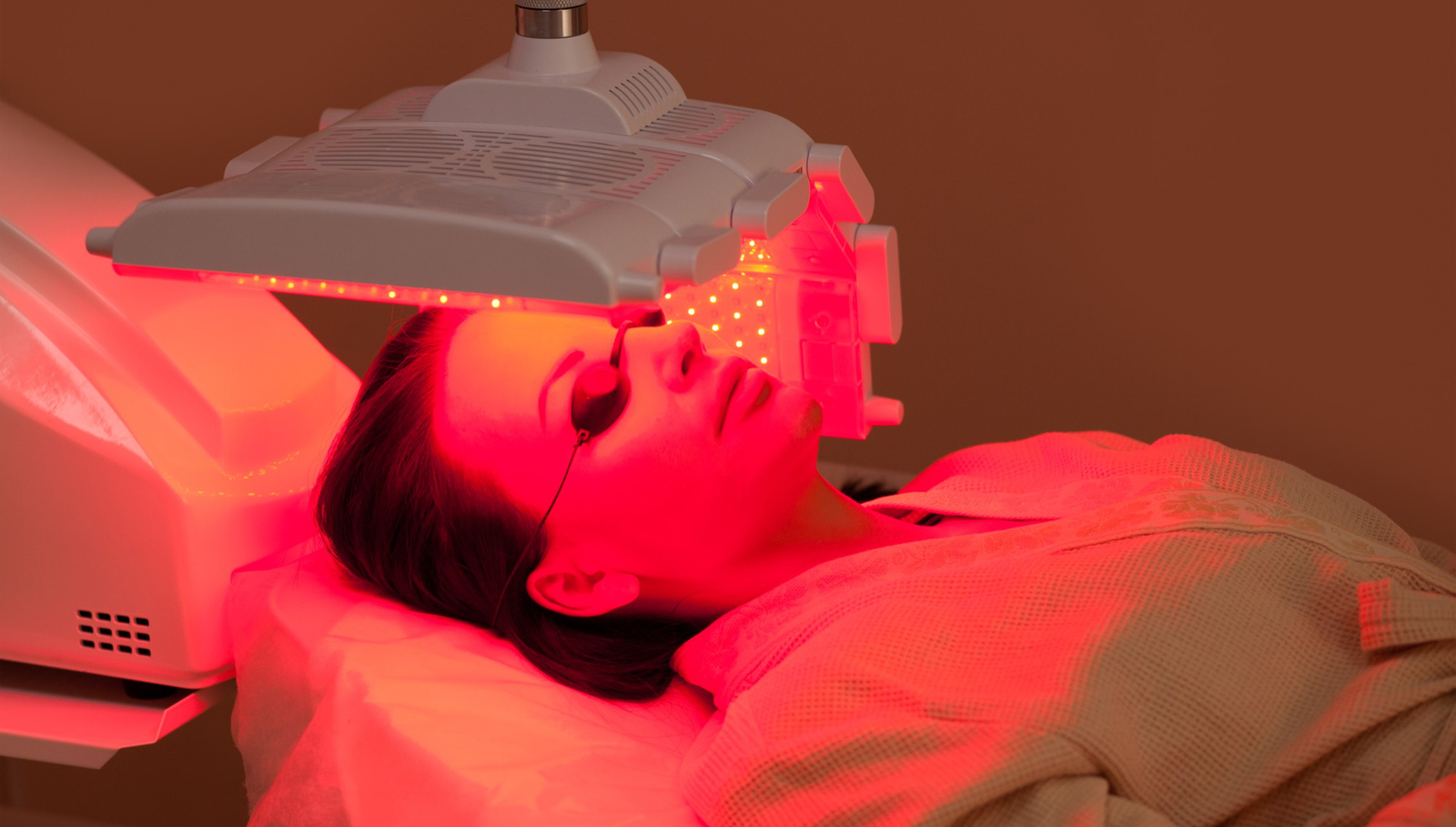Curious about LED light therapy but unsure which light is right for your skin?
With so many devices and colours on the market—red, blue, near-infrared—it’s easy to feel overwhelmed. Each wavelength promises different skin benefits, from smoothing fine lines to clearing breakouts, but understanding how they work (and which is right for you) can be confusing.
In this guide, we’ll break down the science behind LED light therapy and explain exactly what red, blue and near-infrared light do for your skin, so you can make informed decisions based on facts, not fads.
This information is based on current clinical findings and in-practice experience at OMNI Clinic, where LED light therapy is used to support a wide range of skin treatments.
What Is LED Light Therapy?
LED light therapy uses specific wavelengths of light to penetrate the skin at different depths. Each colour of light stimulates natural processes within the skin to promote healing, reduce inflammation, and improve overall skin health.
Unlike UV light, LED light does not damage the skin. Instead, it supports your skin’s natural function and is widely used for anti-ageing, acne treatment, and skin rejuvenation.
Red Light Therapy: The Anti-Ageing Essential
Red light therapy is widely known for its ability to target signs of ageing. It works by penetrating the upper layers of the skin to stimulate collagen production and cellular repair.
Benefits of Red Light Therapy
- Boosts collagen production for firmer skin
- Reduces fine lines and wrinkles
- Improves skin tone, texture and hydration
- Promotes circulation and skin rejuvenation
Red light typically operates in the 630–660 nanometre range, making it ideal for surface-level concerns and visible signs of ageing.
Who It’s For
Red light therapy is ideal for those looking for anti-ageing solutions, skin renewal, or a boost in radiance and hydration.
Blue Light Therapy: The Acne Solution
Blue light therapy is especially effective in treating acne-prone skin. It works by targeting acne-causing bacteria (Propionibacterium acnes) on the skin’s surface.
Benefits of Blue Light Therapy
- Kills acne-causing bacteria without irritation
- Helps regulate oil production
- Reduces inflammation and redness
- Prevents future breakouts
With a wavelength of approximately 415 nanometres, blue light reaches the epidermis, where acne begins.
Who It’s For
Blue light therapy is suitable for teens and adults dealing with mild to moderate acne, congestion, or excess oil.
Near-Infrared Therapy: The Deep Repairer
Near-infrared therapy goes beyond the surface, penetrating up to 850 nanometres into the skin’s deeper layers. This makes it incredibly effective for inflammation, chronic redness, and post-procedure recovery.
Benefits of Near-Infrared Therapy
- Stimulates deep collagen production
- Reduces inflammation and supports skin healing
- Encourages circulation and tissue repair
- Assists in recovery following clinical treatments
Near-infrared light reaches the dermis and underlying tissues, offering a more intensive level of skin support.
Who It’s For
This therapy is ideal for mature skin, clients experiencing inflammation, or those recovering from cosmetic treatments.
Which LED Light Is Right for You?
Here’s a quick summary to help you understand which light best suits your skin concerns:
LED Light | Best For | Key Benefits |
Red Light | Ageing, dull skin | Collagen production, skin rejuvenation |
Blue Light | Acne-prone skin | Acne treatment, oil control, antibacterial |
Near-Infrared | Inflammation, deep healing | Repairs tissue, calms redness, post-care support |
Many clients benefit from a combination of LED lights as part of a comprehensive treatment plan tailored to their skin goals.
Is LED Light Therapy Right for Everyone?
LED therapy is suitable for most skin types and can be customised to a wide variety of concerns. However, it’s important to consider the following:
- Results are cumulative and depend on consistency
- It is not a one-size-fits-all treatment, individual factors like skin type, concern severity and treatment history should be considered
- People with photosensitive conditions or who are taking light-sensitive medications (e.g., isotretinoin) should seek medical advice before starting therapy
A clinical consultation is always recommended to assess your skin and determine the best course of treatment. At OMNI Clinic, LED therapy is often integrated into broader skin treatment plans following a professional skin analysis.
Final Thoughts
LED light therapy continues to grow in popularity, and for good reason. With options that target acne, signs of ageing, inflammation and more, it offers a safe, scientifically backed way to improve skin health and appearance.
The right wavelength for your skin depends on your concerns, skin type and treatment goals. Clinical-grade LED therapy, guided by a trained skin professional, can help you get the most out of this innovative treatment.

Augue interdum velit euismod in pellentesque massa placerat duis ultricies. Tristique et egestas quis ipsum suspendisse ultrices.
Volutpat lacus laoreet non curabitur gravida arcu ac tortor dignissim. Faucibus scelerisque eleifend donec pretium vulputate sapien.
Dui accumsan sit amet nulla facilisi morbi tempus iaculis. In fermentum posuere urna nec tincidunt praesent semper feugiat.